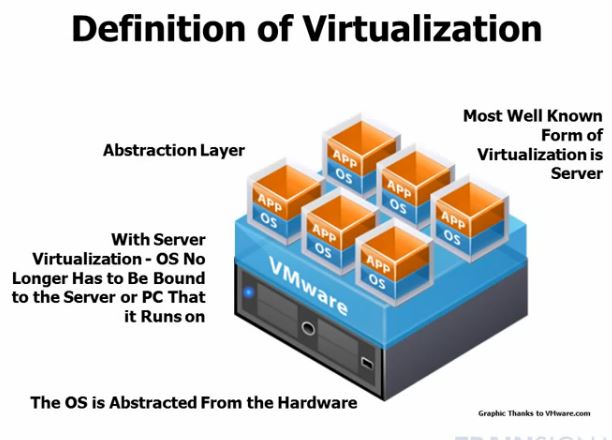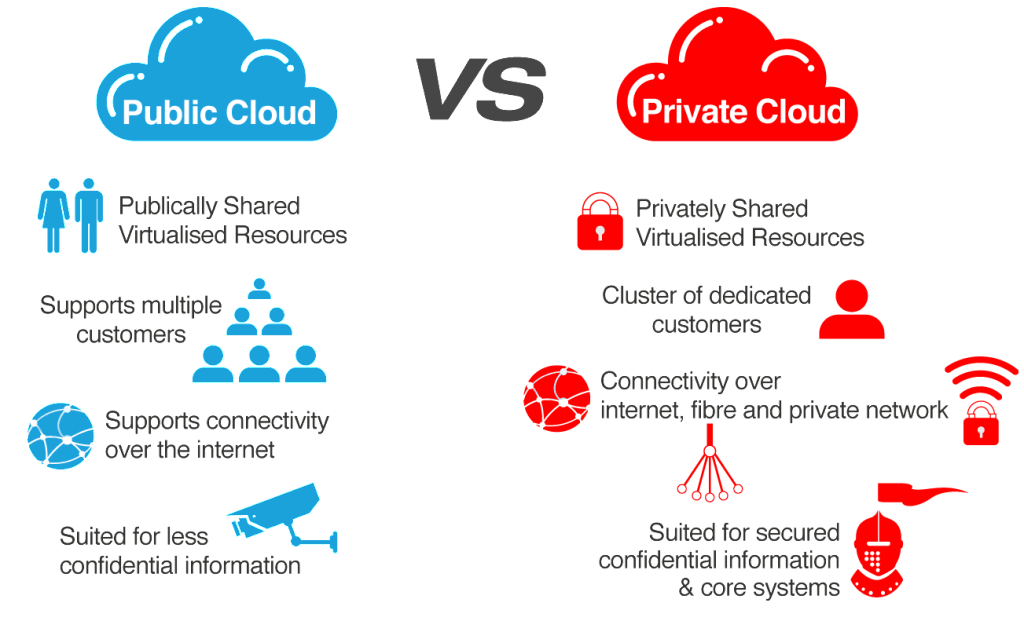Server & Desktop Virtualization
There is a lot of talk about “the cloud” and virtualization these days. How can you decide which approach is best for your organization?
TronixSystem can help. We have decades of experience that we can apply to help you determine the best possible solutions to meet your needs, but first, let’s define some key terms:
 Virtual Server: Server virtualization is the partitioning of a computer server to act as multiple virtual servers. The resources of the server are hidden from users and software divides the system into multiple virtual environments called virtual or private servers. Possibly the most common usage of this technology is web servers because it provides a low-cost way to provide web hosting services to multiple parties.
Virtual Server: Server virtualization is the partitioning of a computer server to act as multiple virtual servers. The resources of the server are hidden from users and software divides the system into multiple virtual environments called virtual or private servers. Possibly the most common usage of this technology is web servers because it provides a low-cost way to provide web hosting services to multiple parties.
 Virtual Desktop: Desktop virtualization basically moves your desktop applications and data storage to a centralized server to improve access and lower costs. This requires the virtual desktop to be connected to the server either through a network or the Internet.
Virtual Desktop: Desktop virtualization basically moves your desktop applications and data storage to a centralized server to improve access and lower costs. This requires the virtual desktop to be connected to the server either through a network or the Internet.
 The Cloud: Cloud computing is Internet-based computing where shared resources, software, and information are provided to a growing variety of devices including computers on demand. In some ways, it is similar to our national electricity grid. Cloud computing is a natural evolution of the widespread adoption of virtualization, service-oriented architecture, and utility computing. The term “cloud” is used as a metaphor for the Internet.
The Cloud: Cloud computing is Internet-based computing where shared resources, software, and information are provided to a growing variety of devices including computers on demand. In some ways, it is similar to our national electricity grid. Cloud computing is a natural evolution of the widespread adoption of virtualization, service-oriented architecture, and utility computing. The term “cloud” is used as a metaphor for the Internet.
The fact is often 90-95% of your computer/laptop’s resources sit idle at any given time and servers utilize as little as 5-10% of their hardware capacity. This means one server can power up to 10 virtual servers providing significant cost savings in addition to the reduced cost of PC ownership when going virtual over your network or through the cloud.
Significant benefits of virtualization include:
User density increases dramatically. The average user density grows by a factor of three on a per-server basis, while a number of users per server manager go up by a factor of between four and five times.
Availability improves. System availability goes up even for basic virtualization. The real benefit comes from an advanced virtualization scenario in which downtime drops by 50%.
Scalability is a click away. Once virtualized, an application that needs more scalability can be moved to a server that can fulfill that requirement with little more than a few clicks of the mouse.
Cost reductions occur. Cost reductions occur across the board, but with future deployments, customers can move to server operating systems that offer unlimited virtualization rights, extending their savings dramatically in many cases.
Automation of routine tasks. Management software can be used to automate routine tasks, such as monitoring common infrastructure alerts and automating responses to known conditions, leading to an increase in IT staff efficiency.
Leveraging staff resources. Use of management software helps increase the proportion of staff time used for productive work, increasing business value.
Higher availability. System and network uptime plus application and database availability are key requirements for conducting business today. Downtime has direct costs to the business that come from a loss of business opportunity and decreased end-user productivity.
Faster response to incidents. This can occur in a number of ways, ranging from automated responses to simple alerts and alarms, to automatic creation of trouble and repair tickets for service desk functions, to problem determination and resolution aids such as event correlation, impact analysis, and root cause analysis.
Cost savings and improved return on investment (ROI). As demonstrated repeatedly by numerous studies, the overall effect of using automated software tools for IT infrastructure management typically results in cost savings and positive ROI. Areas for cost savings include reduced hardware and software costs, IT staff efficiency, end-user productivity, and enhanced operations for business applications, including reduced downtime and faster performance.
Using IDC’s calculations, the average company deploying basic virtualization could see an ROI of 472% and payback in less than a year, including deployment time. This is a very significant ROI for a relatively low-cost, low-risk initiative.
Nevertheless, there are pros and cons in every technology. The arguments for and against virtualization can be quite confusing to our clients.